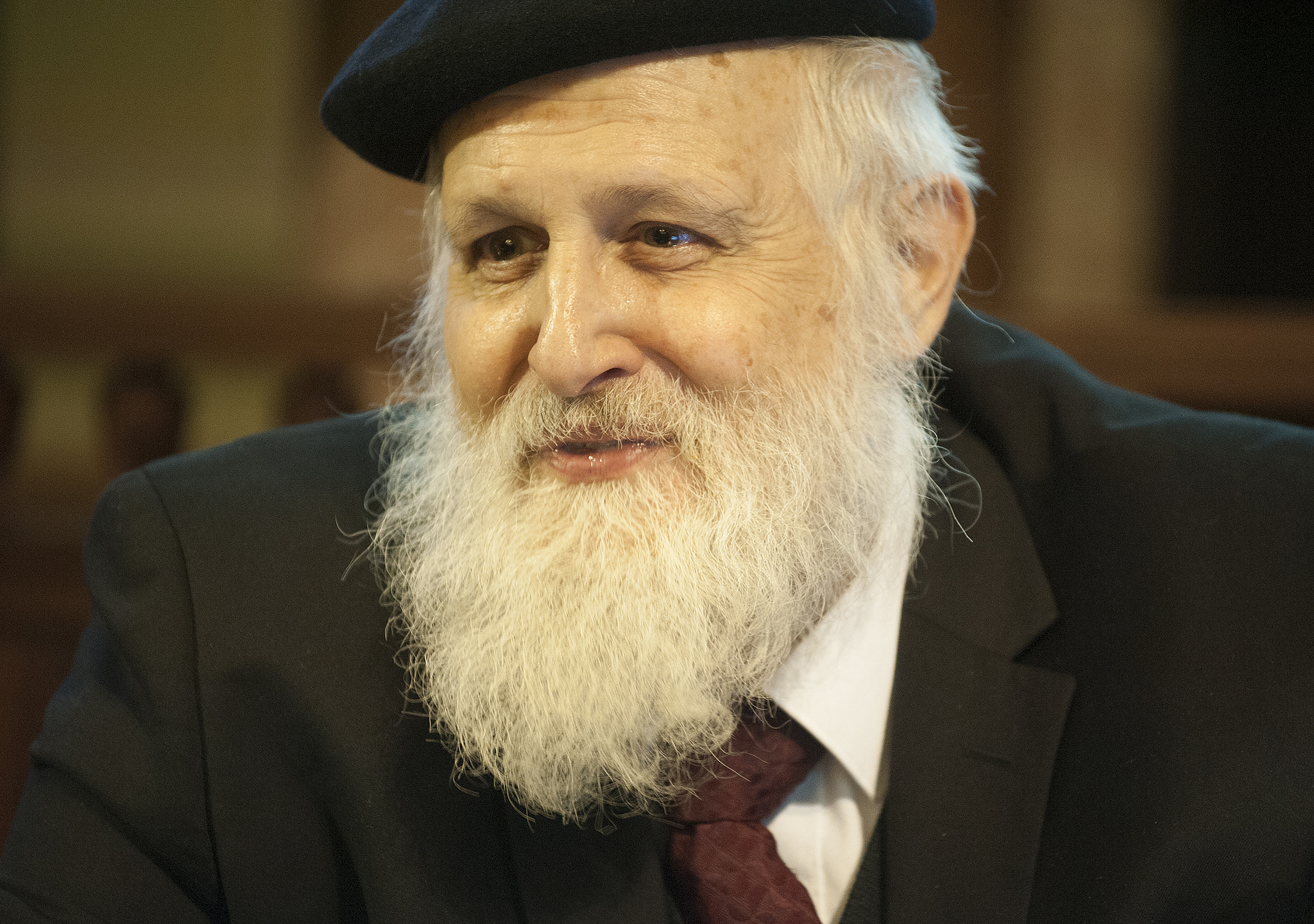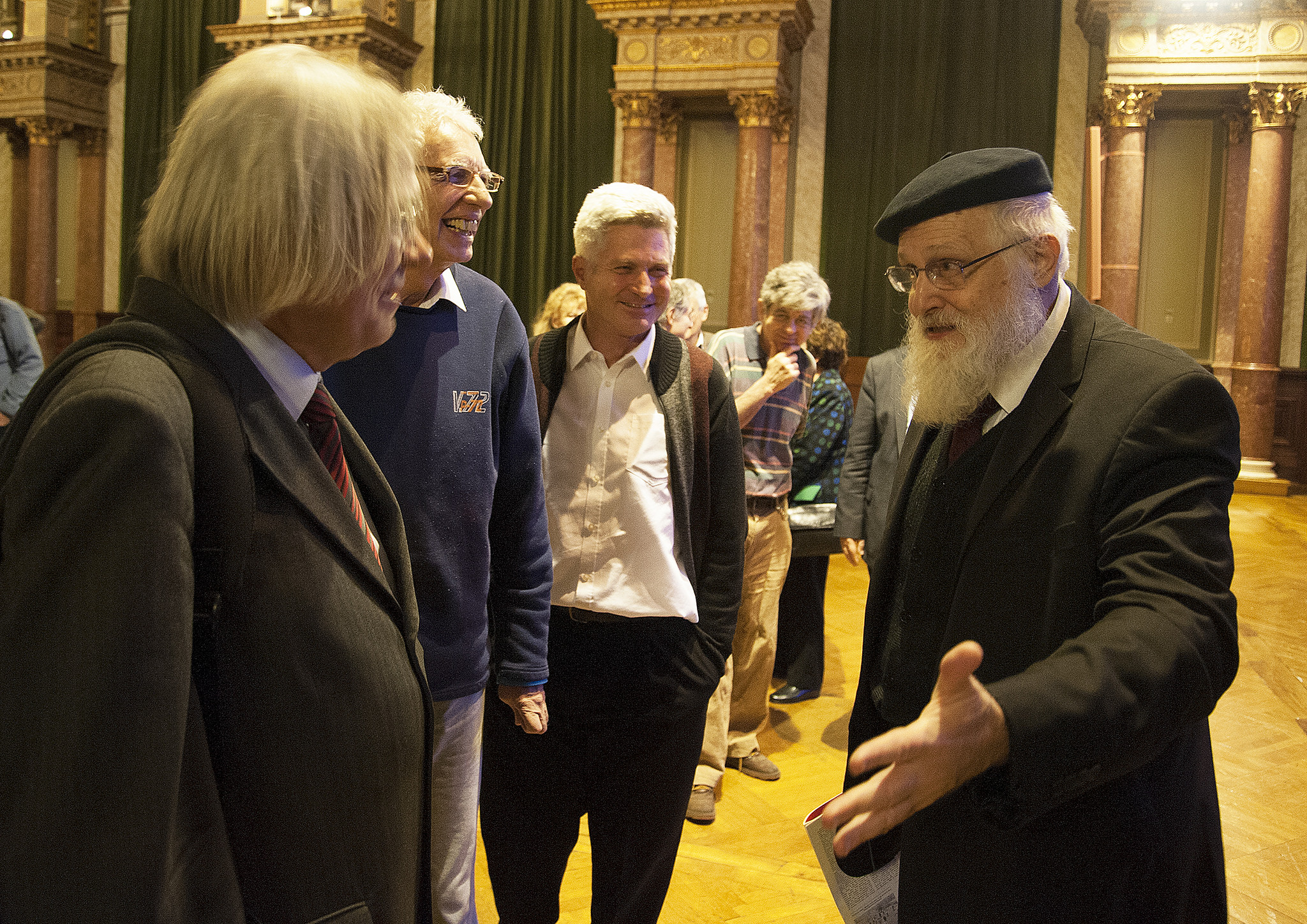“The award came as a surprise” – Interview with American mathematician Barry Simon on receiving the Bolyai Prize
On January 6th the only international prize presented by the Hungarian Academy of Sciences, namely the János Bolyai International Mathematical Prize was awarded to Barry Simon. The American mathematician was interviewed by mta.hu.
Barry Simon is the sixth mathematician to receive this distinguished award which is presented to the most prominent mathematical monograph author of the past fifteen years. The monograph in question is titled Orthogonal polynomials on the unit circle, a review of which is available here.
History of the Bolyai Prize
To commemorate the centenary birthday of János Bolyai, a world famous Hungarian mathematician, the Hungarian Academy of Sciences established a prize worth ten thousand Koronas (old Hungarian currency) to be awarded every five years in recognition of an internationally outstanding mathematical work. In addition to honouring the memory of János Bolyai the aim of the award was also to fill in the academic niche that the lack of a mathematical Nobel Prize created.

Barry Simon in the Ceremonial Hall of the Hungarian Academy of Sciences
The first winner of the Bolyai prize in 1905 was Frenchman Henri Poincaré, one of the most versatile mathematicians of the 19th century while German mathematician David Hilbert received the second award in 1910. Following World War I the awarding of the prize was suspended. It was not until 1994 that the Hungarian Academy of Sciences decided to re-establish the Prize renaming it the International János Bolyai Prize of Mathematics. The gilt bronze medal remodelled from the original moulds and complemented with USD 25.000 was presented to Israeli mathematician Saharon Selah in 2000, to Russian/French scientist Mikhail Gromov in 2005 and to Russian/German Yuri Manin in 2010.
“The Bolyai prize is unique in two ways,” said President László Lovász speaking of the Prize. "Firstly, it is the only international award of our Academy. Secondly, this is the only mathematical prize in the World that awards monograph writers specifically. (A comparable prize by the American Mathematical Society has a broader scope.) In mathematics it is not the writing of articles that is of primary importance to the researcher but the research process and the discovery itself, but of course we have to suffer through writing up our results. Assembling the results of a longer research program into a coherent monograph, however, is always a colossal task, which is often side-lined by most scholars. Consequently it is this magnanimous effort of monograph writing that we are seeking to honour through the Bolyai prize. Many young mathematicians I have conversed with have told me that their paths in mathematics were shaped by this or that monograph, therefore these writings play a significant role in shaping the rationale of the new generation of scientists.‟
Mr. Simon earned his degree in mathematics at Harvard University. From here he went on to Princeton University which was in the process of becoming a significant hub within mathematical physics research. According to his co-workers at the time he was a gushing fountain when it came to writing scientific articles, while simultaneously, he was also a mentor for numerous PhD students and soon became legendary for his in-depth knowledge across the various fields of mathematics.
In 1981 he went on to work at Caltech where he is to this day working as the IBM Professor of Mathematics and Theoretical Physics. The number of his publications currently exceeds 400 and many of his former students have become leading members within their scientific disciplines. In 2012 he was awarded the Poincaré prize which is presented to the most eminent scholars of mathematical physics while last year (apart from the Bolyai prize) he also won the Steele Prize for Lifetime Achievement from the American Mathematical Society.
Mr. Simon’s accomplishments have had a prodigious effect on multiple fields of mathematics and theoretical physics. The achievement for which he is being honoured amalgamates the theory of orthogonal polynomials and the operator theory and it is this integrated methodology that proved to be so fruitful within both fields of study. The book instantly became a huge success and a worthy sequel of Hungarian mathematician Gábor Szegő's classic piece regarding orthogonal polynomials in 1939.

Barry Simon after delivering his lecture
The 70-year old mathematician was interviewed by mta.hu.
Were you surprised about winning the Bolyai Prize?
Absolutely. I was only vaguely aware of the prize and had no idea I was under consideration.
Can you tell us about your connections to Hungarian mathematicians?
Hungary has been the centre for the study of orthogonal polynomials since the beginning of the 20th century so my work has put me in contact with several outstanding Hungarian mathematicians - in particular Vili Totik (with whom I have a joint paper) and Paul Nevai. While our interests aren't close, forty years ago, I met Domokos Szasz through our mutual friend Joel Lebowitz and have chatted with him several times over the years.
Can you describe an idea, a method of thinking or something else that connects the many fields of science you are working on? What is it that makes a mathematical problem interesting for you?
In the earlier part of my career, I was very much motivated by using mathematics to understand a variety of problems in theoretical physics. I was very much influenced by the attitude of my advisor, Arthur Wightman that it should be possible to make the sometimes hand-waving arguments of theoretical physics into mathematical theorems. Later my work led me into consideration of problems in spectral theory with beautiful mathematical connections which I followed even when they seemed a little less relevant to physics. I've always been attracted to areas where the mathematics is deep but the subject is not so well developed that there are no longer low-lying fruit to be picked.
Are there predictions in physics (hypothetical particles, predicted phenomena etc.) which are specifically based on your work?
Not really. My work has been more about giving theoretical physicists additional insights into their theories. Among them, my most noted work involves something I named Berry's phase which is a subtle aspect of quantum dynamics which I related to holonomy, a classical geometric idea that goes back to Gauss. Elliott Lieb and I proved results about large atoms that lent support to what is known as density functional theory, a subject used in molecular modelling. I have results that provide the only rigorous proofs of continuous symmetry breaking something basic to statistical physics (e.g. magnetization) and to elementary particle physics.
Beyond mathematics
In the 1990's Barry Simon, parallel with his mathematical career, also wrote articles for the most distinguished computer periodical of the era, namely PC Magazine. Initially he introduced mathematical programs only but later on covered numerous other topics as well. We could be as bold as to say that more people remember his name as the author of The Mother of All Windows Books than one of the most renowned mathematician's in the World.
Mr. Simon's fellow mathematicians recollected numerous anecdotes for the scholar's 60th birthday celebration which can be found here.
